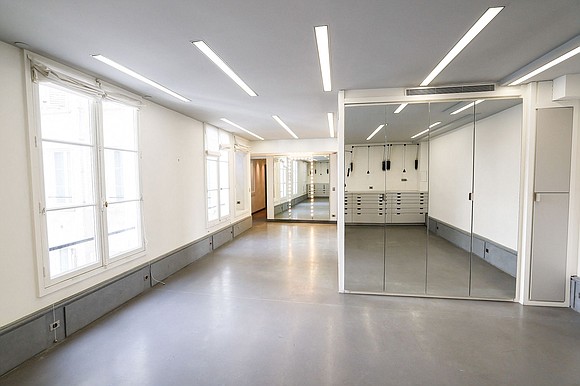Fashion legend Karl Lagerfeld’s Paris apartment sells for $10.8 million
Jack Guy, CNN | 3/27/2024, 11:50 a.m.
A Paris apartment owned by the late fashion designer Karl Lagerfeld has sold for €10 million ($10.8 million).
The futuristic abode, which sits on the Seine River in central Paris with views of the Louvre, went under the hammer Tuesday morning, according to real estate broker Groupe Althémis, which sold the property.
Located on Quai Voltaire in the city’s 7th arrondissement, the three-room, 260-square-meter (2,800-square-foot), third-floor apartment sold for nearly double its list price of €5.3 million ($5.7 million).
Although it is housed in a building dating from the 17th century, the apartment stands out for its ultra-modern design.
The listing described the apartment’s “avant-garde style” and “clean and organic lines,” and accompanying photos show spacious, brightly lit rooms with polished gray floors.
One large room is lined by a series of floor-to-ceiling shelving units, and there is a spacious dressing room, as might be expected in the residence of one of fashion’s most famous names.
Best known as the creative director of Chanel, a role he held from 1983 until his death in 2019, Lagerfeld was also famous for his luxurious homes.
The full extent of this tirelessly curated “high luxury” is revealed in the book “Karl Lagerfeld: A Life in Houses,” which was published in January.
Featuring rarely seen images of 13 of Lagerfeld’s properties in Europe — spanning Paris, Monte Carlo, Rome, Hamburg and more — the book reveals a lesser-known side to the designer, and provides insight into his sense of style when it came to interior design.
Lagerfeld’s tastes changed from property to property, according to fashion writer Patrick Mauriès, who wrote the introduction to the book.
“It was always changing from one atmosphere to another, from antiquarian interiors to ultra-modern ones,” said Mauriès of Lagerfeld’s design aesthetic, having visited many of his properties over the years, particularly those in Paris.
“He’s a singularity in that there is no unity in his type of decoration.”




